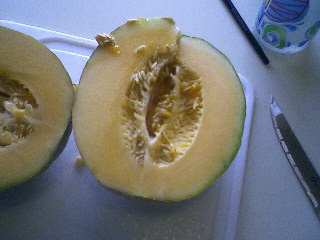
GUDE OLD FASHIONED LEFSE
WHAT IS this LEFSE ANYWAY?
Wikipedia:
Lefse is a traditional soft Norwegian flatbread made out of potatoes, milk or cream and flour, and cooked on a griddle. Special tools are available for lefse baking, including long wooden turning sticks and special rolling pins with deep grooves. There are significant regional variations in the way lefse is made and eaten, but it generally resembles a flatbread.
HOW DO YOU SAY LEFSE?
It's pronounced Lefsa (with an A) not Lefse (with an E) that's what you might call someone who uses their left hand.
Here's my brother and his son wearing their matching Viking shirts. (His son requested a 'shirt to match Dad's shirt' for Christmas.

Dis holiday is da family lefse party! Yew got tew come en enjoy da fun! Yah Shure.

WHO COOKS THE LEFSE?
Scandinavians all over cook lefsa and my family cooks it every Christmas holiday. We get together and make Swedish meatballs and this traditional Norweigian Lefsa (it's like a thin tortilla made mostly of potatoes.)
When my father was alive, he resurrected a tradition his family had participated in: making the Scandinavian delicacy that's cooked on a special circular griddle-- made by boiling up a truckload of potatoes, skinning them while still hot, then "ricing" them (or pressing them through something looks like a large garlic press) adding cream (half and half) flour, salt then rolling the dough into small balls.
We used a special rolling pin (with grooves in it) to roll out each piece of lefsa. This part can be tricky because you have to use the right amount of flour to cover the rolling pin and the pastry cloth. Roll it till thin. When the lefse is thin enough, take a lefse stick (a stick that's rounded on one side and flat on the other) and slide the stick under the lefse, then pick it up. Carefully roll the lefse onto the griddle.
It took four of us in the kitchen to make the lefse. One person was peeling and ricing the potatoes while another was adding flour and cream to the potato mixture. Someone else was rolling out the dough balls-- possibly the hardest job because if you roll it too thin, the lefse flops when you're lifting it onto the griddle. Someone also sat at the griddle with another lefse stick, turning over the lefse when it started to brown. I remember my father doing much of the rolling in the past.
What I love most about making lefse is that it involves the whole family; it's not something one person does. As a family, it brought us together. And when I neglected my lefse making duties (which I did some years) I always got crap about it and less lefse to take home as well! This year I spent hours rolling lefse, so I think I did my share :)
After the cooking was finished, I was covered in flour. A thin coat of flour even stuck to my contacts; I had to take them out and wash them.
Below is a photo of my brother shredding carrots and potatoes. My grandmother would not have wholly approved of adding carrots and potatoes to the meat (she was a gourmet cook and her meatballs were made with unadulterated pork and beef and a sprinkle of nutmeg.) But my mother must have adapted the recipe, possibly to make the meat go further?





Just a little Lefsa will go a long way
Gives you indigestion all of your days
put it on your menu
and you'll be sure to say
just a little lefsa will go a long way!
Flour on Da Boobs
Here's me after rolling lefse in piles of flour for hours. I think I made up for all those years I was a slacker in years past. Dad would be proud!

An Ole Scandinavian Lefse Recipe (a little lefse humor) (compliments of http://www.lefsetime.com)
Yew tak yust ten big potatoes
Den yew boil dem til dar don,
Yew add to dis some sveet cream
And by cups it measures vun.
Den yew steal 'tree ounces of butter
And vit two fingers pench some salt,
Yew beat dis wery lightly
If it ain't gude it is your fault.
Den yew roll dis tin vit flour
An' light brown on stove yew bake,
Now call in all Scandihuvians
Tew try da fine lefse yew make!
Supplies you need:
Potato ricer
Lefse griddle
Lefse rolling pin
Rolling pin cover
Lefse stick
Lefse board











































